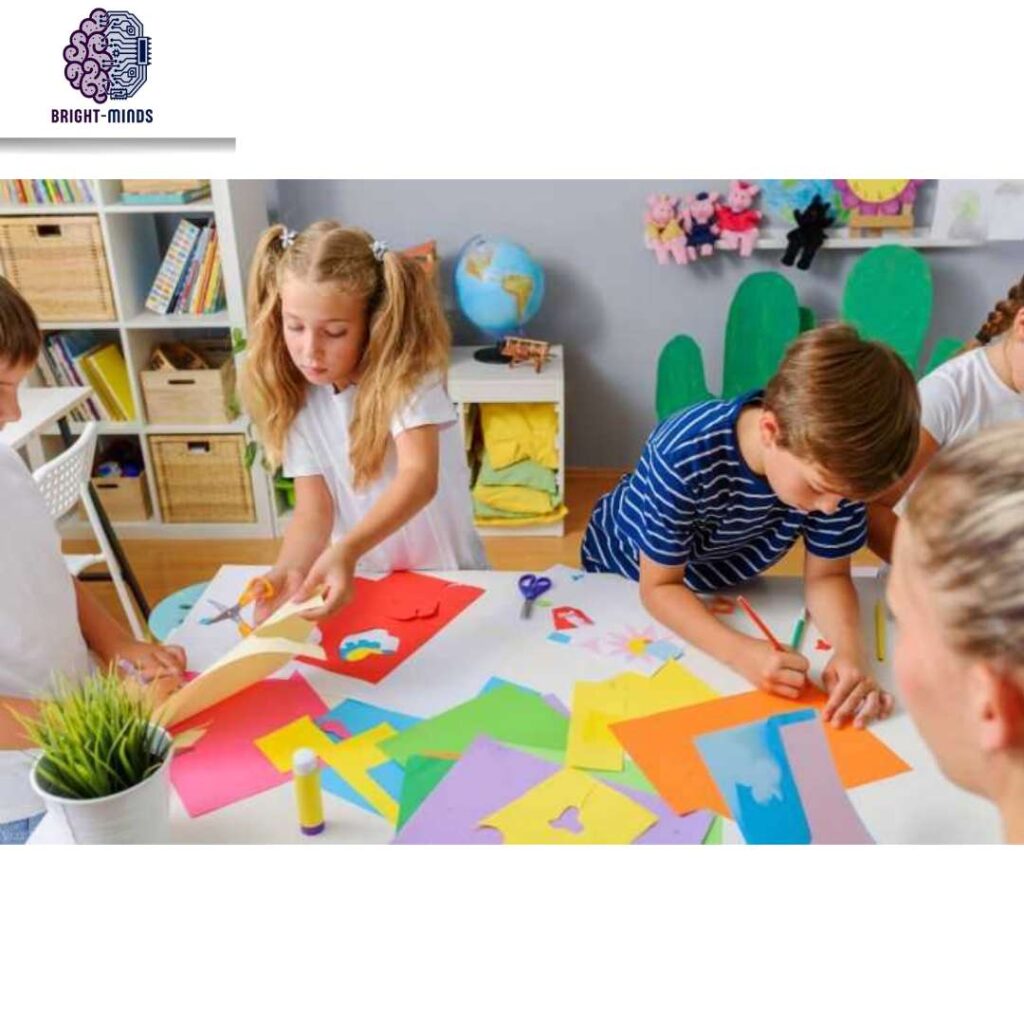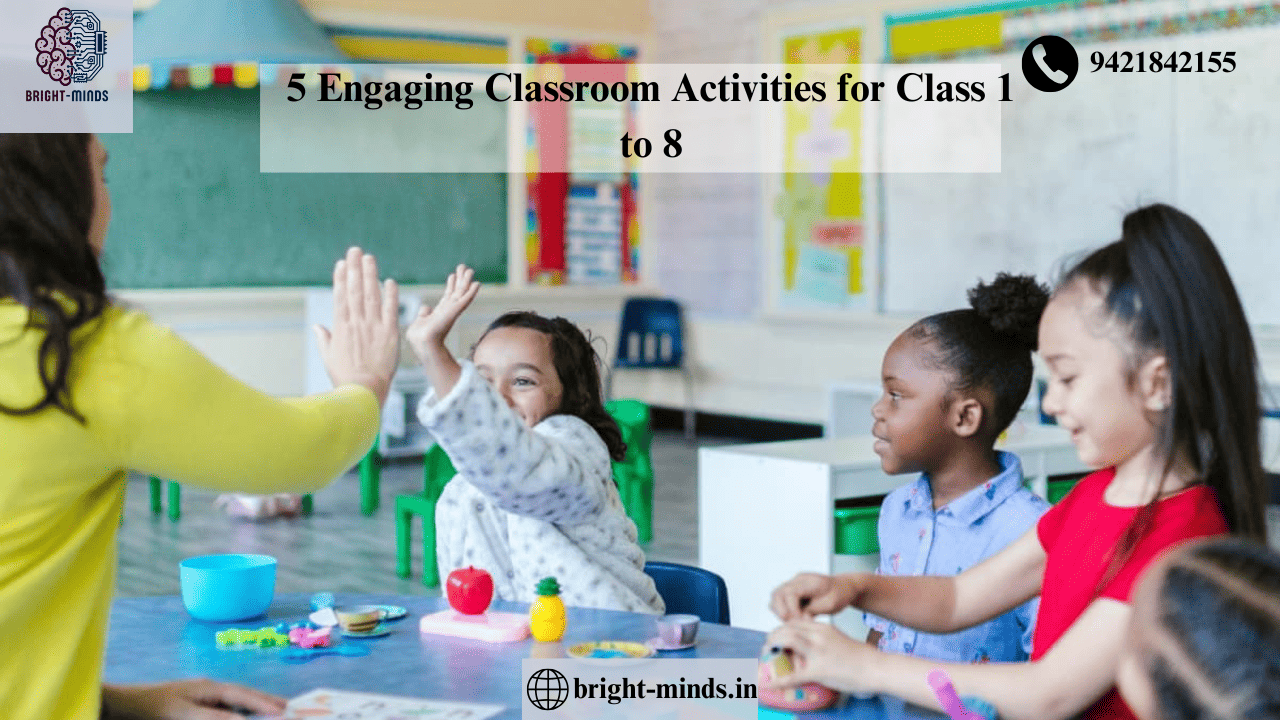Introduction
Creating an engaging learning environment for students in grades 1 to 8 can be a challenging task, especially with the wide age range and diverse interests. However, integrating fun, interactive, and educational activities into the classroom not only helps in making lessons more interesting but also enhances students’ learning experiences. Activities that encourage collaboration, creativity, and hands-on learning are crucial in keeping students motivated and focused. Whether you are teaching math, science, language, or social studies, there are countless activities that can make learning enjoyable and impactful.
In this blog, we will explore five engaging classroom activities for students from class 1 to 8 that will help boost their skills, increase their enthusiasm, and foster a love for learning.
Treasure Hunt (For Grades 1 to 8)

A treasure hunt is a fantastic way to engage students while encouraging teamwork and critical thinking. This activity can be customized for any subject, whether it’s finding vocabulary words for English, solving math problems, or identifying historical facts for social studies. By integrating clues or tasks that need to be solved, the hunt keeps students on their toes and makes learning an exciting challenge.
How to Implement:
- Choose a Theme: Select a theme that aligns with your current lesson. For example, in an English lesson, you could create a treasure hunt where students find synonyms or antonyms.
- Create Clues: Write clues that require students to solve problems to move on to the next one. For example, a math clue could involve solving an equation to find the next location.
- Divide into Teams: Split the class into small groups, and assign them the task of finding each clue and solving the puzzles. You could hide clues around the classroom or school for added excitement.
- Celebrate the Win: The team that finds the treasure first or completes all tasks wins a small prize or a certificate.
Benefits:
- Encourages teamwork and collaboration.
- Develops problem-solving and critical thinking skills.
Story Building with Picture Prompts (For Grades 1 to 4)
Objective: Boost creativity, vocabulary, and storytelling skills.
Story-building with picture prompts is an excellent activity for younger students to practice their creativity and storytelling skills. This activity can be tailored for any subject, but it’s especially beneficial for developing language and writing skills. By using images as inspiration, students are prompted to create their own narratives and explore their imagination.
How to Implement:
- Select Picture Prompts: Gather a variety of images that could serve as inspiration for stories. These can be photographs, illustrations, or even comic strips.
- Introduce the Activity: Show the students a picture and ask them to write a short story based on it. You could give them a theme or a setting to get them started.
- Share Stories: After students finish writing, have them share their stories with the class or in small groups. You can also have a peer review session where students give feedback on each other’s stories.
- Extend the Activity: For older students, you can turn this into a collaborative exercise where students work in pairs or small groups to create a more elaborate story.
Benefits:
- Encourages creativity and imagination.
- Expands vocabulary as students come up with new words to fit their story.
- Improves writing and narrative skills.
Science Experiment Challenge (For Grades 3 to 8)
Objective: Enhance scientific thinking, teamwork, and hands-on learning.
Hands-on science experiments are always a hit with students, especially when they get to actively participate in the process. By conducting simple yet fascinating experiments, students develop a better understanding of scientific principles and learn to work collaboratively. The Science Experiment Challenge can involve small group projects, where students conduct experiments and then present their results to the class.
How to Implement:
- Select an Experiment: Choose a simple but engaging science experiment. For instance, you could do a water filtration experiment, a baking soda and vinegar volcano, or a plant growth observation.
- Group the Students: Divide the class into small groups, and assign each group a task or experiment to perform.
- Conduct the Experiment: Provide the necessary materials and let students follow the steps to carry out their experiment. Encourage them to observe and take notes throughout the process.
- Present Results: After the experiment, have each group present their findings, observations, and conclusions to the class. This could be done in the form of a poster, a presentation, or a report.
Benefits:
- Develops critical thinking and problem-solving skills.
- Encourages collaboration and communication within teams.
- Reinforces scientific concepts through practical experience.
Debate and Discussion (For Grades 5 to 8)
Objective: Develop speaking, listening, and reasoning skills.
Debates are a great way to get older students thinking critically about different topics while practicing their public speaking and argumentation skills. This activity helps students explore various viewpoints, improve their ability to reason, and build confidence when speaking in front of others. The debate format can be used to explore a wide range of topics, from current events to ethical dilemmas.
How to Implement:
- Select a Topic: Choose a topic that is relevant to the students’ grade level and current curriculum. For example, you could debate whether school uniforms should be mandatory or if technology has improved learning.
- Divide the Class into Teams: Split the class into two teams, each assigned to argue for or against the topic.
- Research and Prepare: Give students some time to research their side of the argument and prepare their points. Encourage them to find facts, statistics, and examples to support their position.
- Hold the Debate: Set up a structure for the debate, allowing each team to present their points and respond to the opposing team. Afterward, facilitate a class discussion where students reflect on the arguments and express their opinions.
Benefits:
- Develops critical thinking and reasoning.
- Improves public speaking and presentation skills.
- Teaches students how to respectfully disagree and listen to other opinions.
Classroom Art Show
Objective: Encourage creativity, self-expression, and art appreciation.
An art show is a fun way for students to express themselves creatively while also learning to appreciate the work of others. This activity can be adapted for all grade levels and can be tied to various subjects, such as visual arts, history, or literature. Whether it’s drawing, painting, or creating sculptures, students can use different materials to bring their ideas to life.
How to Implement:
- Assign a Theme: Choose a theme for the art show that aligns with your curriculum. For example, it could be based on a historical period, a specific season, or a literary theme.
- Provide Materials: Provide students with various art supplies, such as paper, colors, paint, clay, and other materials. Encourage them to use their imagination and creativity.
- Create Art: Give students time to work on their projects. You could integrate this into lessons by allowing students to create art related to a particular subject or topic they are studying.
- Host the Art Show: Once the artwork is complete, set up an art show in the classroom. Students can present their pieces, explaining the inspiration behind their creations. Invite other classes or parents to view the art gallery.
Benefits:
- Fosters creativity and self-expression.
- Encourages teamwork and collaboration if done in groups.
- Builds confidence as students present their work to others.
Conclusion
Classroom activities for students in grades 1 to 8 should be both fun and educational. The activities outlined in this blog not only help to enhance academic learning but also promote important skills like teamwork, communication, creativity, and critical thinking. Whether you are teaching science, language arts, social studies, or math, these engaging activities will keep your students motivated and excited about learning.
By incorporating these interactive activities into your classroom, you’ll create an environment where students can learn, grow, and develop important life skills in a fun and engaging way.
Also Read:
https://bright-minds.in/unlocking-word-meaning-for-class-ukg-english-to-hindi/

